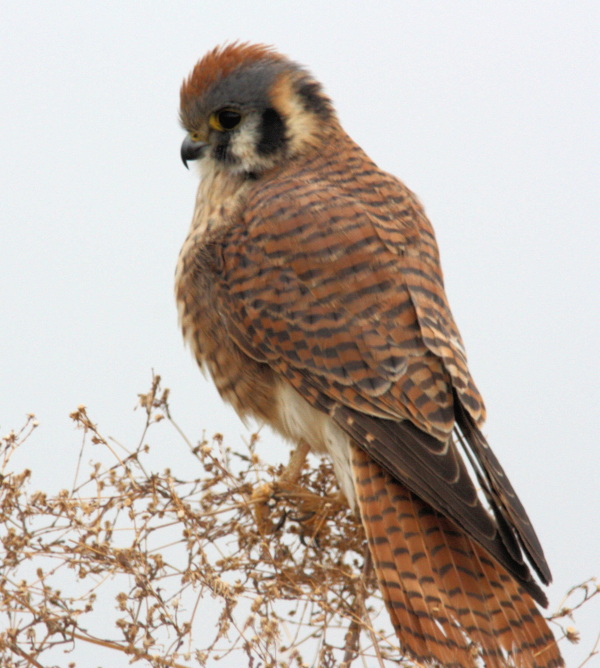
American Kestrels that nest earlier in the year tend to be more successful and raise more fledglings (photo by Paul Konrad).
|
A new continent-wide study of nesting American Kestrels shows that pairs that nest at the first sign of spring have a higher success rate and raise more fledglings. That was especially true for kestrels nesting in the Northeast region where “late” nesters had reduced nesting success, while successful late nesting attempts produced fewer fledglings. Kestrels in the West and Southwest have about a 4-month window to initiate their clutches while those in the Northeast have only about a 2-month window, after which productivity declines sharply. This is consequential for a species with an incubation and nestling period that takes about 2 months, plus post-fledging care.
According to this new study, American Kestrels that delayed egg laying until after early spring were more likely to have failed nesting attempts, and this was particularly true for kestrels in the highly-seasonal environment of the Northeast. Conversely, when nesting earlier than the onset of spring, kestrels in the Northeast had an advantage, as indicated by the fact that overall they produced more young per brood than kestrels in the West, Southwest, and Southeast.
Rangewide, the more out-of-sync American Kestrel pairs were with the onset of spring, the fewer fledglings they produced. This spring offset didn’t affect kestrels in the Southwest as much, where a nest initiated 30 days outside of the peak spring period still produced 4 fledglings, indicating that Southwestern kestrels might be more resilient to spring fluctuations.
Timing is Everything
Birds have evolved so that their nesting season coincides with the peak abundance of food in their nesting area. For most North American species, that’s springtime. Climate change is causing some species to nest earlier in response to earlier peaks in food resources. While many studies have focused on birds that eat insects, what do birds with other types of diets do when spring arrives earlier than anticipated? American Kestrels are small falcons that don’t rely on one specific type of food; they eat large insects, small mammals, small birds, and lizards, depending on their location and habitat use. They also have longer incubation and nestling periods than small songbirds, so they need resources to be more stable for a longer time.
To read more, you can refer to the original article provided by NestWatch at NestWatch | For American Kestrels, It Pays To Stay In Sync With Spring - NestWatch and to refer to the scientific publication that describes this study indepth, see Phenology effects on productivity and hatching-asynchrony of American kestrels (Falco sparverius) across a continent - ScienceDirect